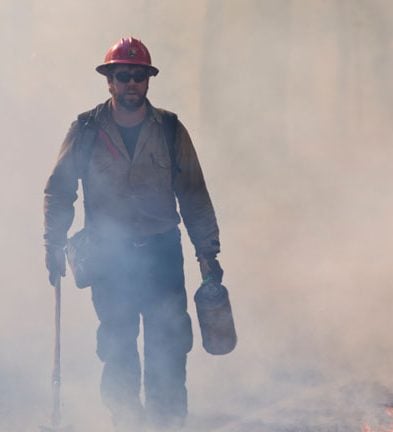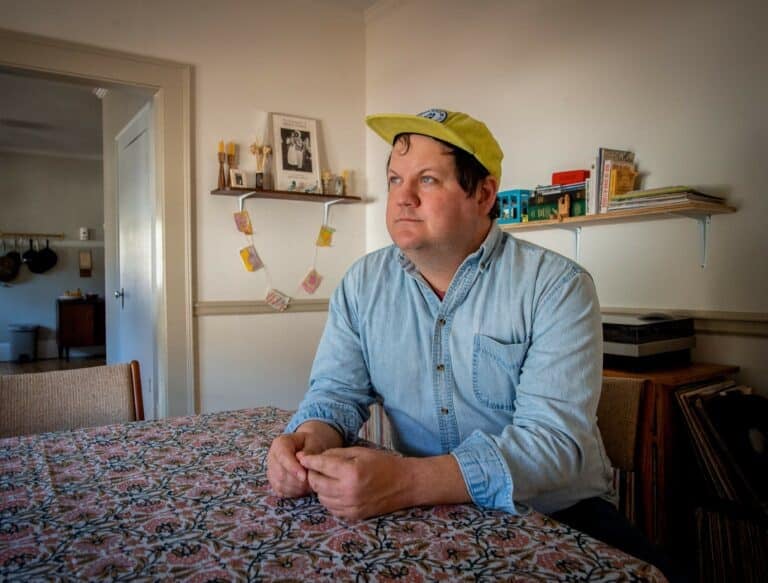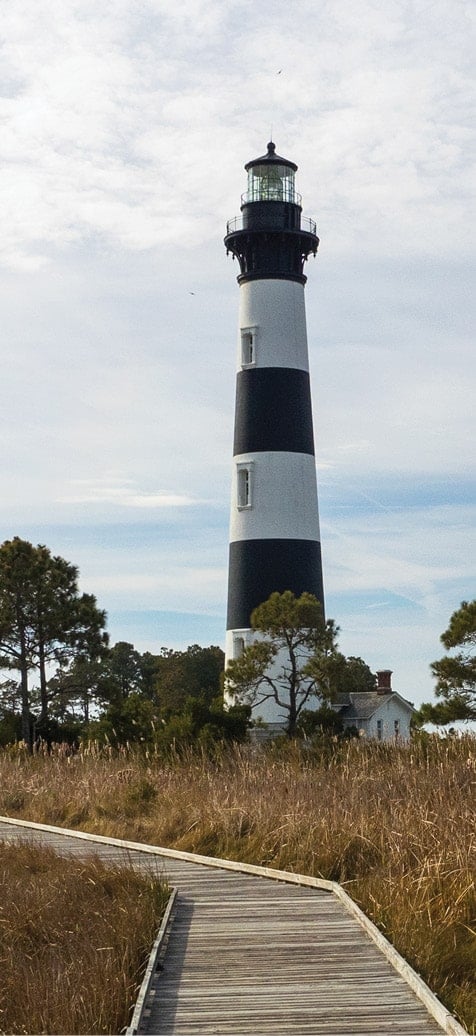Last November, wildfire ravaged Great Smoky Mountains National Park and the neighboring communities of Pigeon Forge and Gatlinburg, Tenn. The blaze killed 14 people, damaged more than 2,400 structures, and caused more than $500 million in damages.
The fire was started by a pair of teenagers, but a combination of extreme drought, high temperatures, wind, and overgrown forests, aligned to create the devastating combustion.
Wildfires are starting earlier, lasting longer, and burning hotter and bigger than ever before.
In 2015, more acres burned from wildfire than in any year in recorded history. From 2006-2016, the average of acres burned by wildfire nearly doubled to 7.15 million acres.
The widening scope and complexity of wildfire is driven by a myriad of factors: a history of misguided fire suppression; climate change; growing development along wildland boundaries; and an increase in fires caused by humans.
Wildfire on a Warming Planet
In the early 20th century, the U.S. Forest Service adopted a policy of total fire suppression, or fighting all wildfire as quickly as possible. Soon after, the Forest Service launched the Smokey the Bear campaign to help disseminate the idea that fire was a destructive force to be feared and fought.
The logic behind fire suppression ran contrary to centuries of Native American and homesteader land management practices. Now, a century later, total fire suppression is viewed as an ecologically backward policy, one that fails to acknowledge the positive presence of fire on different fire-dependent ecosystems. Known as the “Smokey the Bear Effect,” the absence of fire has led to dense forests, excessive underbrush, and a loss of diversity among habitats. In short, fire suppression has made landscapes less resilient to fire, transforming forests into ticking fuel bombs.
Climate change is also transforming the frequency, duration, and intensity of wildfire. The globe’s warming temperatures exacerbate many contributors to wildfire: drought, increased lightning strikes, early cold snaps, and diminishing snow pack, to name a few. In the past 30 years, climate change has doubled the expansion of forest fires in the Western United States, according to researchers at the University of Idaho.
Though wildfires can happen any time in most of the Southeast’s deciduous forests, fire season historically peaks in spring and fall. These days, wildfires are starting earlier in the spring and lasting later in the fall. As humidity levels fall, leaf canopies dry and fall to the forest floors, and brittle leaves and twigs easily turn into kindling.
Warming temperatures have also allowed tree-killing invasive pests like the southern pine beetle and bark beetle to persist through the winter season, adding another fuel type to the fire.
In the South, personal property often abuts forest boundaries along the wildland-urban interface. Development along such boundaries makes wildfire and prescribed burning exponentially more complex.
Because federal agencies pick up the majority of wildland fire’s costs, few municipalities restrict development along the wildland boundaries. Currently, there are more than 70,000 communities and 46 million homes along the nation’s wildland-urban interface.
The elongated fire season and increasing severity of wildfires have led to a ballooning federal fire budget. In 2015, the Forest Service spent more than half its annual budget on fighting wildfire; by 2025, over 67% of the agency’s budget is expected to go toward fire suppression.
The allocation of resources towards fighting wildfire means less money for other Forest Service programs, like forest and watershed restoration, prescribed burns, and recreation infrastructure. Since 1998, Forest Service fire staffing has increased by 114% while non-fire staff has decreased by 39%.
Fighting Fire with Fire
Fire has positively influenced the Southeast’s landscape for thousands of years. It opens holes in forest canopy for sunlight, thins dominant vegetative species, and makes nutrients available to animals low on the food chain.
In the Blue Ridge, oak and pine trees have adapted thick bark and pine cones which open to disperse seeds after fire scorches them. In Florida, the red cockaded woodpecker thrives in the aftermath of fire, nesting in burned out tree cavities. Deer populations across the Southeast thrive after a burn, feasting on the fresh nutrient-rich vegetation that emerges.
Today, federal agencies are harnessing fire as a critical land management tool—a way to restore ecosystem health and to prevent catastrophic wildfire.
Prescribed fire, or fire ignited to meet management objectives, is one way to utilize fire for good. In addition to habitat restoration, prescribed burning can reduce hazardous fuel loads so accidentally started fires don’t cause catastrophic damage.
In Shenandoah and other national parks, for example, the acreage is divided into different fire management zones. In protection areas, near structures and Park boundaries, wildfire will be immediately suppressed. In fire ecosystem areas in the undeveloped interior of the Park, fire managers have an option to let the fire blaze, utilizing its flames for ecological and preventative management objectives.
At Big Cypress National Preserve and Everglades National Park, ecosystems need fire every five years to maintain full health. If landscapes don’t burn, vegetation builds up, certain species start to dominate, and the threat of severe wildfire increases.
Jordan McKnight, Chief of Fire at Big Cypress, plans prescribed burns on a five- to seven-year rotation. McKnight and his crew are essentially mimicking fire’s natural process under more controlled circumstances.
Most of the Preserve’s prescribed burning takes place from January to March when the climate is drier and cooler and burning low to moderate intensity fires is possible. The burn program is currently focusing on revitalizing populations of red-cockaded woodpeckers, sparrows, bats, deer, wild turkeys, and panthers.
McKnight estimates that managing an acre of prescribed fire at Big Cypress costs about 10 percent of the expense of fighting wildfire on the same tract of land. In 2017, Big Cypress has prescribe burned more than 100,000 acres.
“I love the instant gratification of prescribed burning,” says Sam Ashbaugh, lead firefighter for Big Cypress. “It’s just like mowing your lawn; you’re done and within days you see fresh turkey tracks and flowers.”








